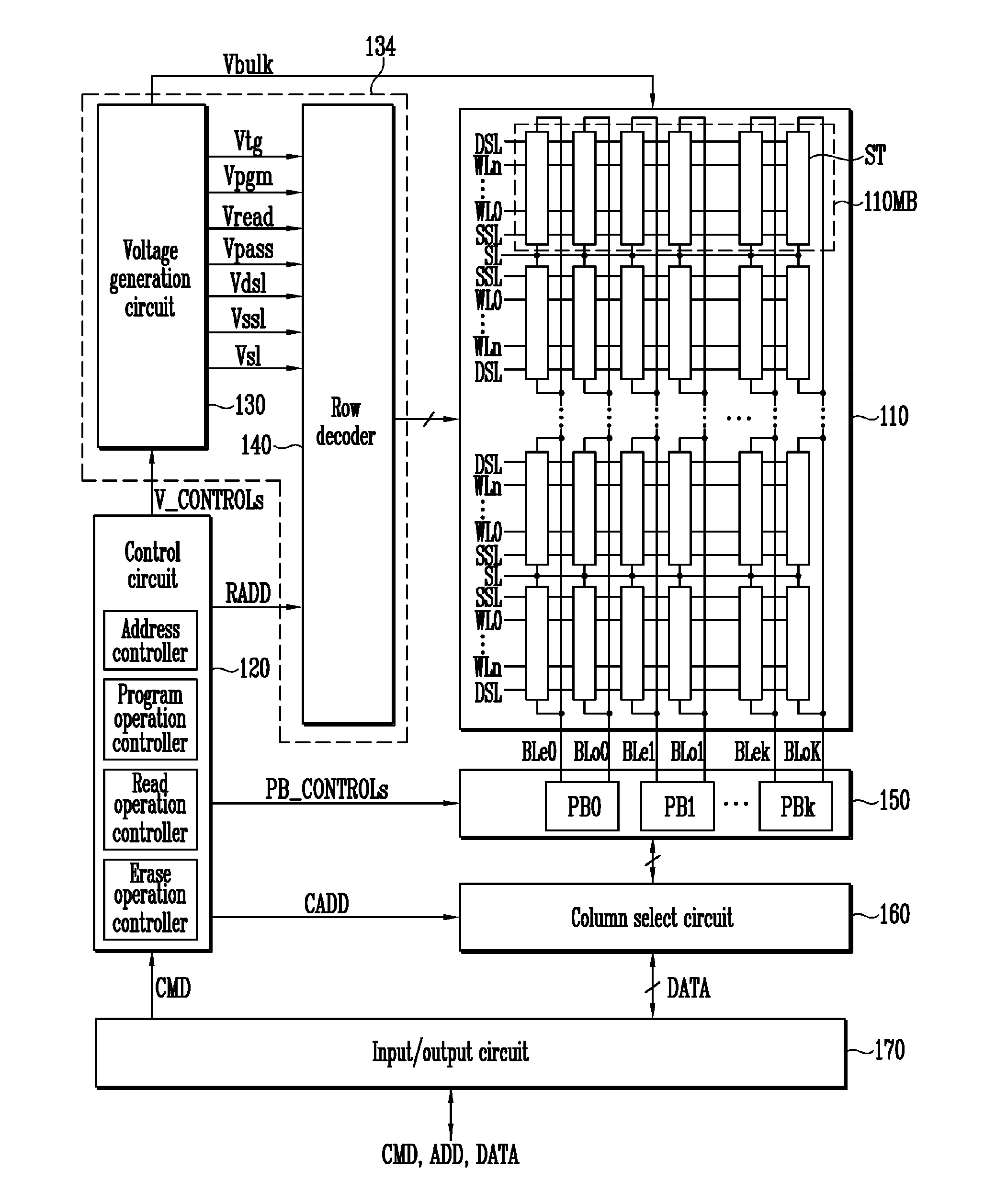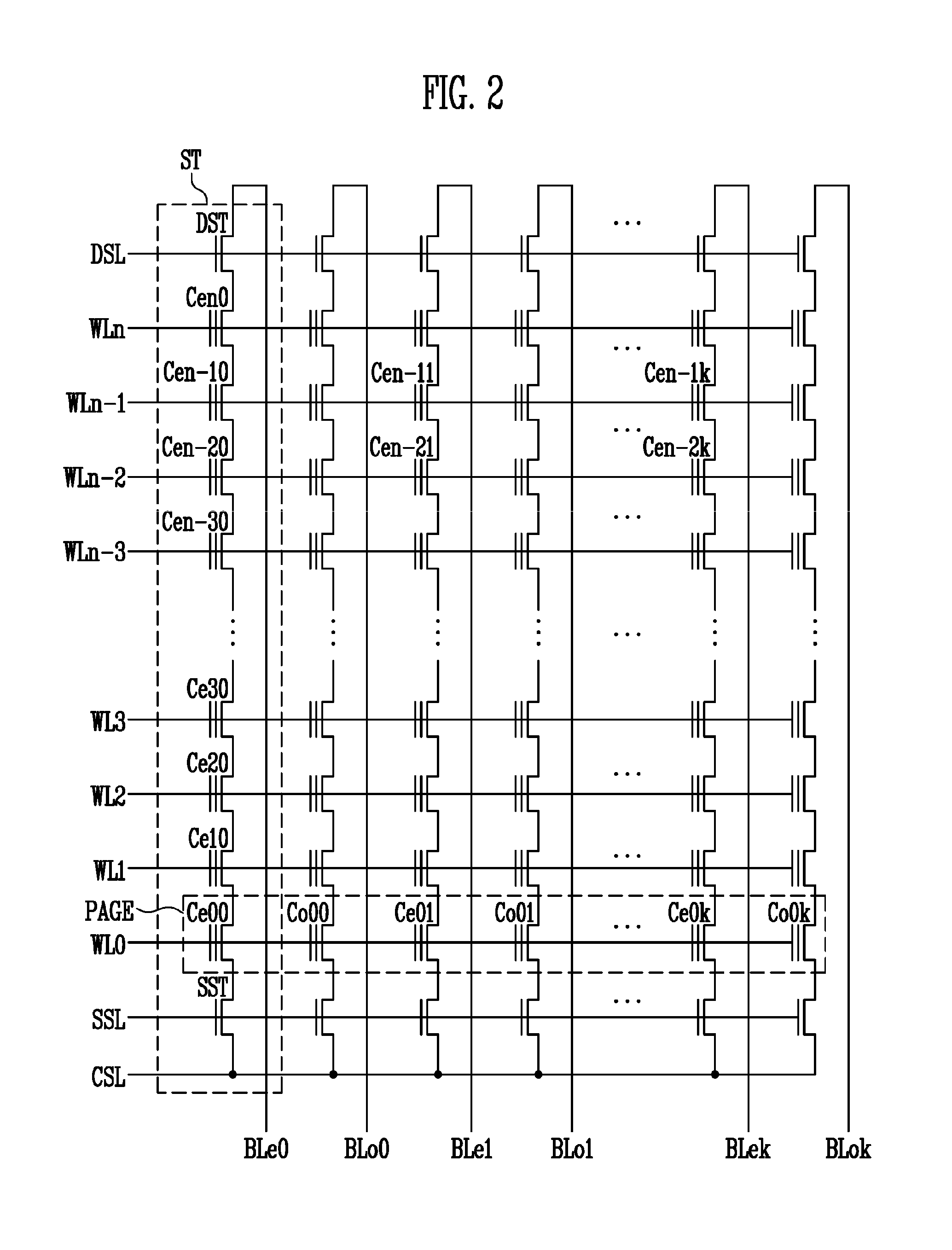Semiconductor memory device and method of operating the same
a memory device and semiconductor technology, applied in the field of semiconductor memory devices, can solve the problems of deterioration of the operational characteristics of the semiconductor memory device and the reduction of the cell current, and achieve the effect of improving the operational characteristics
- Summary
- Abstract
- Description
- Claims
- Application Information
AI Technical Summary
Benefits of technology
Problems solved by technology
Method used
Image
Examples
first embodiment
[0066]As shown in FIG. 10, a difference between current that flows from a common source line SL to a selected bit line through a channel area of a selected memory string when every unselected memory cell is in an erase state Al and current when every unselected memory cell is in a program state B1 is great when the read operation in the first embodiment is performed on a first memory cell coupled to a source select transistor in the selected memory string.
second embodiment
[0067]Further, a difference between current when every unselected memory cell is in an erase state A2 and current when every unselected memory cell is in a program state B2, is also great when the read operation in the second embodiment shown in FIG. 4 is performed on the first memory cell coupled to the source select transistor in the selected memory string, but an amount of the current flowing from the common source line SL to the selected bit line through the channel area of the selected memory string increases. As a result, a change of the threshold voltage according to the state of the unselected memory cells is reduced compared to with a conventional technique.
third embodiment
[0068]Referring to FIG. 10, a difference between current when every unselected memory cell is in an erase state A3 and current when every unselected memory cell is in a program state B3, substantially reduces when the read operation in accordance with the third embodiment shown in FIG. 5 is performed on the first memory cell coupled to the source select transistor in the selected memory string. Accordingly, change of the threshold voltage according to the state of the unselected memory cells is considerably reduced compared to with the conventional technique.
[0069]In the event that the above read operation is performed, current flowing in the selected memory string increases, change of the threshold voltage due to the read disturb may be minimized even though the number of the read operations performed increases, and the deterioration of operational characteristics due to back pattern dependency may be reduced as shown in FIG. 10. As a result, operational characteristics and reliabi...
PUM
 Login to View More
Login to View More Abstract
Description
Claims
Application Information
 Login to View More
Login to View More - R&D
- Intellectual Property
- Life Sciences
- Materials
- Tech Scout
- Unparalleled Data Quality
- Higher Quality Content
- 60% Fewer Hallucinations
Browse by: Latest US Patents, China's latest patents, Technical Efficacy Thesaurus, Application Domain, Technology Topic, Popular Technical Reports.
© 2025 PatSnap. All rights reserved.Legal|Privacy policy|Modern Slavery Act Transparency Statement|Sitemap|About US| Contact US: help@patsnap.com



